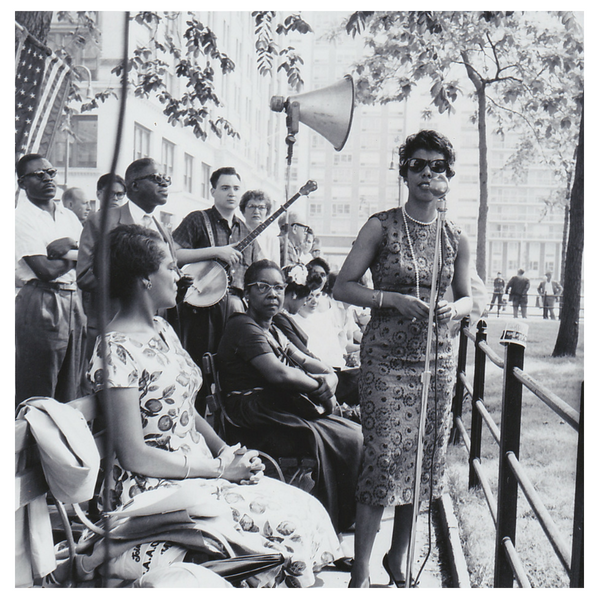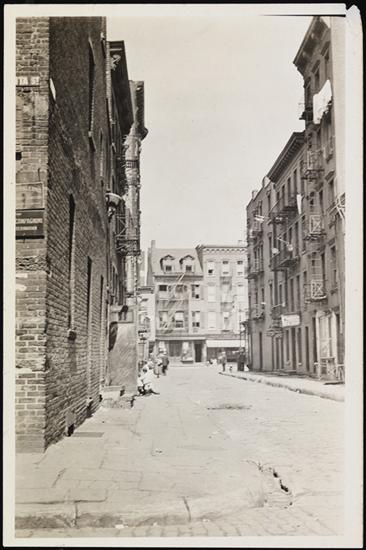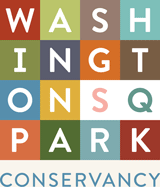Black History Around the Neighborhood
It’s Black History Month, and all month long we’ll be exploring a different facet of black history in and around Washington Square Park. This week we’re exploring the rich black history of the neighborhood around WSP.
Mother Zion A.M.E. Church

New York City’s first black Church found home just a few blocks away from Washington Square Park on the corner of W. 10th and Bleecker Street. Mother Zion African Methodist Episcopal Church — the founding congregation of the African Methodist Episcopal (AME) church — had a profound and lasting impact on the Greenwich Village community, and the nation as a whole.
A force for civil rights and abolitionists, Zion AME was home to some of the most prominent movement leaders, including Sojourner Truth, Harriet Tubman, and Frederick Douglass. Zion AME relocated to it’s Village home at the height of the Civil War from prior locations in Lower Manhattan. It was a move that reflected the northern migration of New York’s African-American community further uptown and into the Village. A northern migration that continued in the early 20th century when the church moved to Harlem and was replaced by a pair of tenement buildings.
African Free Schools

In 1787, the New York Manumission Society — a group dedicated to promoting equality between the races — created the African Free School for freed blacks to have access to education, resources, and opportunities for a better future.
What started as a one-room schoolhouse with forty students — all children of slaves — grew into seven school houses. The third of these was located in the Village near Washington Square Park. By 1835, the African Free Schools were incorporated into the New York City public school system and educated thousands of black students. This early black schooling system became a jumping off point for future decades of black communities advocating for equality and a voice in education systems.
Black & Tan Saloons

Through the 19th and 20th centuries, the area below Washington Square Park was known as “Little Africa,” Although largely associated with the black community, records from the 1900’s indicate that a large number of buildings in the neighborhood were home to both white and black families, and there were a number of interracial couples living in the area.
The neighborhood did not have a favorable reputation among “polite” society at the time, but it was home to the famous “Black and Tan” saloons that provided opportunities for interracial socializing, where blacks and whites mingled freely.
Cooper Union Great Hall

A six minute walk from Washington Square Park sits Cooper Union’s Great Hall. It has been the site of innumerable important moments in African-American history over the years. It was founded by an abolitionist – Peter Cooper – in 1859. In 1860 it was the venue for Abraham Lincoln’s “Cooper Institution Address” that is credited with launching him to the presidency. In 1863, Frederick Douglass took to the Union for his famous speech following the Emancipation Proclamation. And in 1909 it was the location of the first public meeting of the newly founded National Association for the Advancement of Colored People (NAACP).
Strange Fruit

When Cafe Society opened at 1 Sheridan Square in 1938, it was the first formally racially- integrated nightclub in NYC. While the building is still there, the club was only open for a little over a year. In that short timeframe it hosted some of the biggest names in jazz, including Lena Horne, Sarah Vaughan, and Billie Holiday. In fact, it was here that Holiday first performed her song Strange Fruit with its explicit message of protest against lynching and racism.
Holiday reported that singing Strange Fruit made her fearful of retaliation from those who took issue with the song’s message. When she sang the song, it was always her finale. The waiters would stop serving, and the room would go dark except for a spotlight on Holiday. When she was finished she would leave the stage; no encore.
A Raisin in the Sun

Lorraine Hansberry lived less than a mile from Washington Square Park when she wrote her award-winning play A Raisin in the Sun. Following the struggles of an African-American family on the segregated South Side of Chicago, Raisin was the first play produced on Broadway written by an African-American woman. Hansberry used the proceeds from the play’s success to buy her home at 112 Waverly Place in 1960, which she owned until her death in 1965. Hansberry was actively involved in the NAACP and raised funds to form a Greenwich Village chapter of the organization.
MLK Day

It’s thanks to Howard Bennett that we recognize Martin Luther King Jr. Day in January each year. Howard was one of the last black residents of Greenwich Village’s ‘Little Africa,’ which had almost entirely disappeared by a few decades into the 20th Century.
Howard was born at 11 Greenwich Avenue, in a tenement that no longer exists. A strong civil rights activist, he served as the Labor Chairman of the NY chapter of the N.A.A.C.P. In 1968, Howard was so incredibly moved by Martin Luther King’s funeral that he began a campaign to make the hero’s birthday a national holiday. It was an effort he championed until his death in 1981, just two years before the national holiday was enacted by a veto-proof majority vote in Congress.
